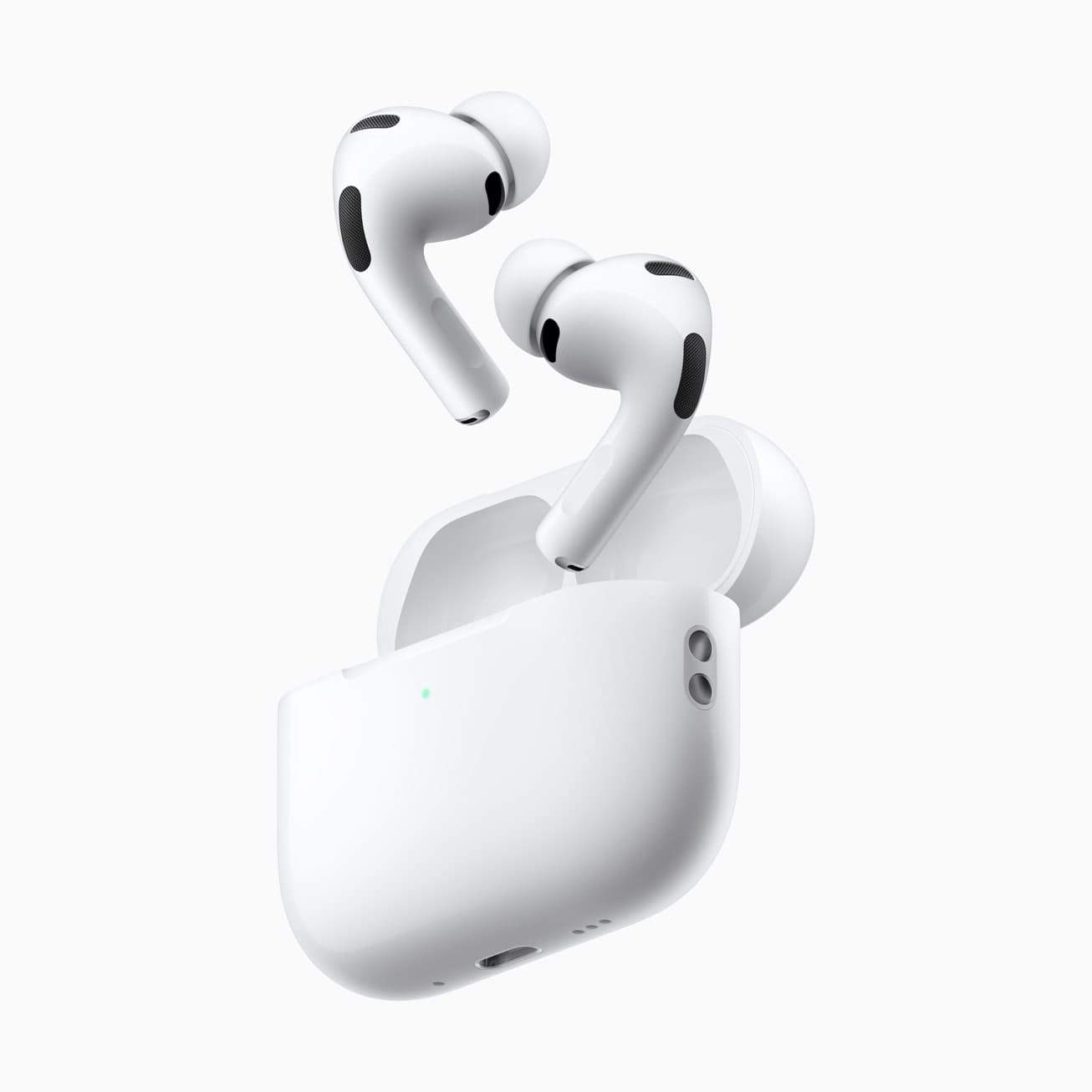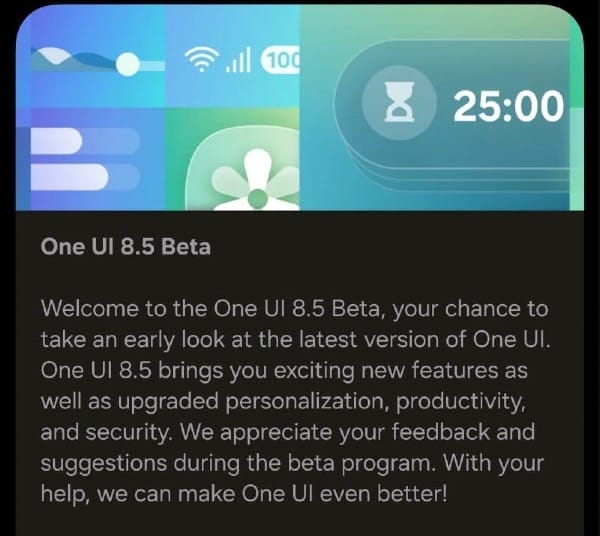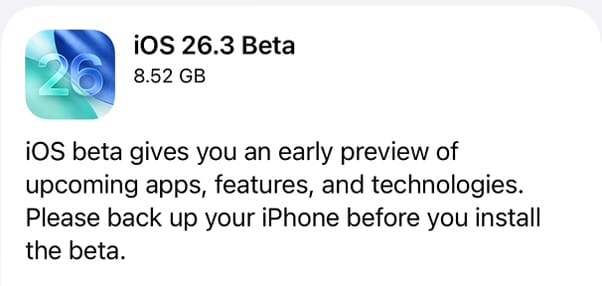At Apple’s “Awe Dropping” event on September 9, 2025, the company unveiled the AirPods Pro 3, a significant upgrade to its flagship wireless earbuds. Priced at $249, these earbuds deliver enhanced audio quality, industry-leading active noise cancellation (ANC), and groundbreaking health features, positioning them as a must-have for audio enthusiasts and fitness-focused users alike. Running on the powerful H2 chip, the AirPods Pro 3 also introduce design refinements and seamless integration with iOS 26 and Apple Intelligence. This article explores the key features, design updates, and health-focused innovations that make the AirPods Pro 3 a standout in Apple’s 2025 lineup.
Design and Fit: Sleeker, More Secure, More Comfortable
The AirPods Pro 3 retain the iconic white, rounded-square charging case but introduce subtle yet impactful design changes. The earbuds themselves are slightly smaller, with a refined shape that enhances in-ear stability, making them ideal for activities like running, HIIT, or yoga. Apple now includes five ear tip sizes (up from four), ensuring a better fit for a wider range of users, which also improves passive noise isolation for enhanced ANC performance.
The charging case has been slimmed down, making it more pocketable than its predecessor. Apple has replaced the physical pairing button with a capacitive touch surface, similar to the AirPods 4, for a seamless setup process via proximity-based technology. The status LED is now hidden beneath the case’s surface, only visible when active, giving the case a cleaner, more premium look. With an IP57 rating for water and dust resistance (up from IPX4 in the AirPods Pro 2), the AirPods Pro 3 are built to withstand intense workouts and outdoor adventures. The case also features a U2 chip for enhanced precision tracking via the Find My app, making it easier to locate misplaced earbuds.
Audio Excellence: Unparalleled Sound and ANC
The AirPods Pro 3 deliver what Apple claims is the “world’s best in-ear Active Noise Cancellation,” canceling up to 2x more noise than the AirPods Pro 2 and 4x more than the original AirPods Pro. This is achieved through ultra-low noise microphones, advanced computational audio, and foam-infused ear tips that enhance passive isolation. The improved ANC excels across all frequencies, including challenging mid and high frequencies, making it ideal for noisy environments like airplanes or busy streets.
A new multiport acoustic architecture transforms the listening experience by precisely controlling airflow to deliver richer bass, a wider soundstage, and vivid vocal clarity. The Adaptive EQ has been upgraded to dynamically adjust sound based on ear fit and environment, ensuring consistent audio quality across music, calls, and media. The AirPods Pro 3 also enhance Personalized Spatial Audio, offering an immersive experience when paired with devices like the Vision Pro, though full lossless audio support remains limited to specific use cases.
The Transparency mode has been refined to make voices—both the user’s and those around them—sound more natural, allowing seamless interaction without removing the earbuds. For calls, the AirPods Pro 3 improve voice clarity and noise reduction, leveraging the H2 chip for superior performance in FaceTime, iPhone calls, and third-party apps using CallKit.
Health Features: Heart Rate Monitoring and Beyond
One of the most exciting additions to the AirPods Pro 3 is the integration of health sensors, marking a significant step in Apple’s push toward wellness-focused wearables. The earbuds feature a custom photoplethysmography (PPG) sensorthat uses invisible infrared light pulsed at 256 times per second to measure heart rate via blood flow during workouts. This feature, first introduced in the Powerbeats Pro 2, allows users to track heart rate and calories burned across up to 50 workout types in the Fitness app, closing Move rings and earning awards without needing an Apple Watch.
For users who own an Apple Watch, fitness apps default to the watch’s heart rate data for consistency, but the AirPods Pro 3 provide a standalone solution for those without a watch. The Workout Buddy feature, powered by Apple Intelligence, analyzes workout data and fitness history to deliver real-time, personalized motivational insights via iPhone, enhancing the exercise experience.
While rumors suggested temperature sensing for more accurate in-ear readings compared to the Apple Watch’s skin-based measurements, this feature did not make it into the final product for 2025. However, Apple is reportedly exploring this and other sensors, such as infrared cameras for gesture control, for a more significant hardware upgrade in 2026.
Performance and Battery Life
The AirPods Pro 3 retain the H2 chip from the AirPods Pro 2, contrary to expectations of a new H3 chip. Despite this, the H2 chip delivers robust performance, supporting improved ANC, faster device switching, and seamless integration with iOS 26 features like Live Translation for real-time in-person conversations. This feature, also available on AirPods Pro 2 and AirPods 4, allows users to communicate across languages by translating speech directly through the earbuds when paired with an Apple Intelligence-compatible iPhone.
Battery life has been extended, offering up to 8 hours of listening with ANC enabled (compared to 6 hours on the AirPods Pro 2) and up to 10 hours in Transparency or Hearing Aid modes. The charging case provides a total of 30 hoursof playback, and supports USB-C charging, wireless charging, and MagSafe. A new Camera Remote feature lets users start or stop video recordings by pressing the earbud stem, adding utility for content creators.
Integration with iOS 26 and Apple Intelligence
Running on iOS 26, the AirPods Pro 3 leverage Apple Intelligence for enhanced functionality. Features like automatic pausing when the user falls asleep, improved call quality, and the ability to keep audio in the earbuds when the iPhone connects to other playback devices (like car stereos) enhance usability. The Hearing Health features, including Hearing Protection, Hearing Test, and Hearing Aid mode, have been improved, with the latter offering up to 10 hours of battery life per charge.
The AirPods Pro 3 also support studio-quality recording, making them a versatile tool for podcasters and creators. The Workout Buddy feature integrates with the Fitness app to provide AI-driven coaching, while Smart Stack on iOS 26 proactively surfaces relevant notifications, such as workout reminders or translation prompts, based on context.
Pricing and Availability
The AirPods Pro 3 are priced at $249 in the US, matching the AirPods Pro 2, and are available for pre-order starting September 9, 2025, with shipping beginning September 19. UK pricing is expected to remain at £229, consistent with the USB-C AirPods Pro 2, though confirmation is pending. The earbuds are positioned above the AirPods 4 ($129) and AirPods 4 with ANC ($179), offering premium features for a higher price point.
Looking Ahead
The AirPods Pro 3 build on the success of their predecessors with meaningful upgrades in ANC, audio quality, and health integration. While the lack of an H3 chip or temperature sensing may disappoint some, the heart rate monitoring and refined design make these earbuds a compelling choice for fitness enthusiasts and audiophiles. Analyst Ming-Chi Kuo suggests a more significant update with infrared cameras for gesture control is planned for 2026, hinting at Apple’s long-term vision for AirPods as a multifunctional platform.
Whether you’re upgrading from AirPods Pro 2 or entering the ecosystem for the first time, the AirPods Pro 3 offer a polished blend of audio excellence and health-focused innovation. Are you ready to experience the next level of wireless audio? Let us know in the comments!












Discussion